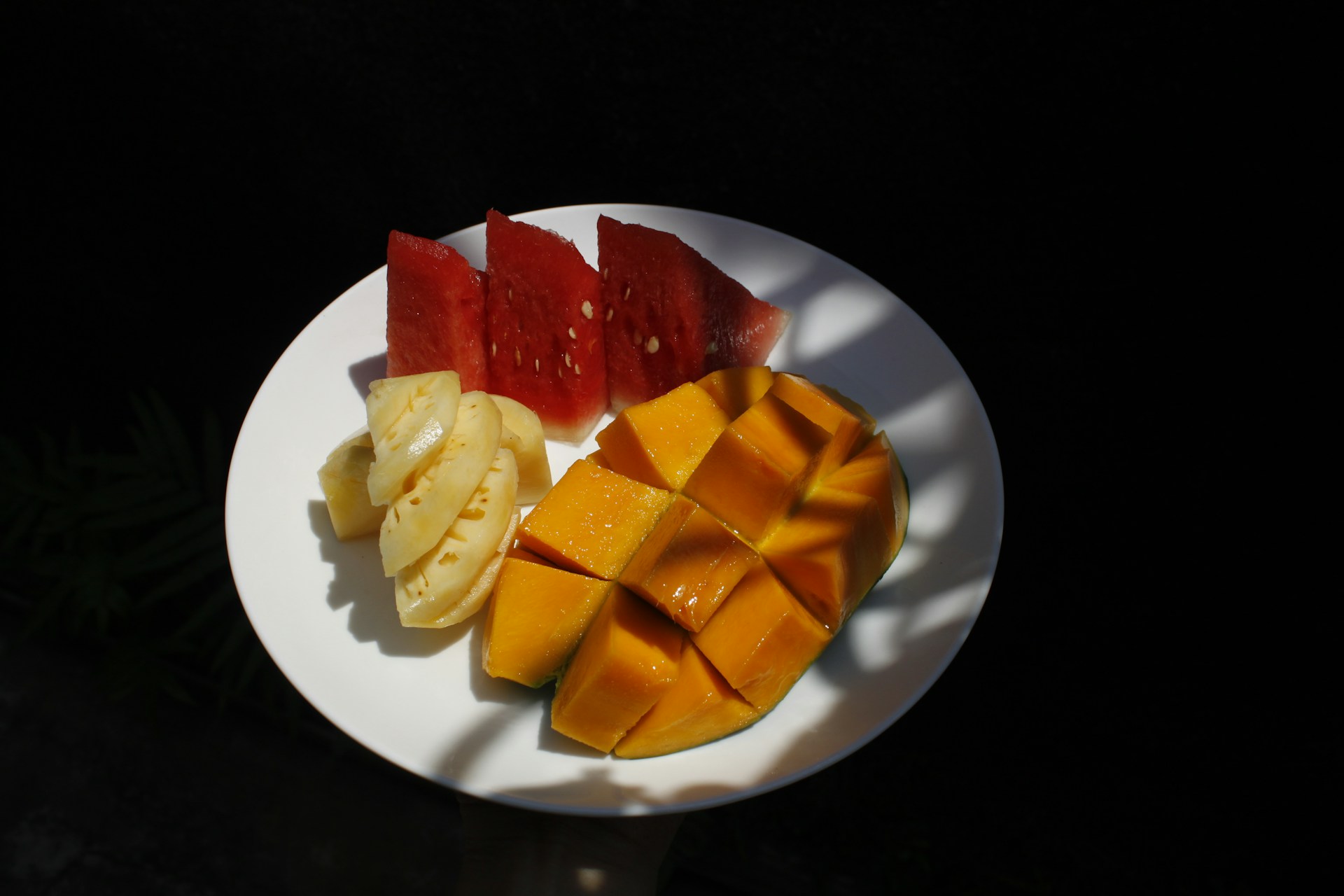The Development of Multivitamin Mineral Jelly Candy "Previmin” for Stunting Prevention
Pengembangan Permen Jelly ”Previmin” Multivitamin Mineral untuk Pencegahan Stunting

Background: The prevalence of stunting in Yogyakarta province has decreased in 2022, although it hasn't reached the target of 14%. The Taburia supplementation program, implemented by the Indonesian government in 2010, aimed to address this issue, but its effectiveness remains a concern. Therefore, in 2017 jelly candy with fortification of Taburia and prebiotics fructooligosaccharides was developed as well as an organoleptic test in preschool and kindergarten children. Subsequently, in 2022, the production of the same jelly candy, named "Previmin" was upscaled and carried out in a factory. Production on a factory scale can change the nutritional contents and organoleptic properties of the product.
Objectives: To evaluate the organoleptic properties, acceptability, and nutritional content of factory-scale "Previmin” jelly candy.
Methods: This was true experimental study carried out in Kalurahan Sumberarum, Kapanewon Moyudan, Sleman District, Yogyakarta to evaluate the organoleptic properties and acceptability of jelly candy "Previmin'' on 59 toddlers. The production process was conducted by PT Natural Food Success, whereas nutritional content analysis was carried out in BBSPJIA Laboratory Bogor.
Results: Based on organoleptic tests, the color, flavor, taste, and texture score were above 5 points hence respondents liked "Previmin”. As many as 75% of respondents could consume the product hence Previmin's acceptability was good. Nutritional content, heavy metals, and microbial count have good results and comply with SNI standards.
Conclusions: Most toddlers like and can consume "Previmin” jelly candy. "Previmin” jelly candy contains a good source of macronutrients and micronutrients as well as has complied with SNI standards.
Laksono, A. D., Wulandari, R. D., Amaliah, N. & Wisnuwardani, R. W. Stunting among children under two years in Indonesia: Does maternal education matter? PLoS One 17, (2022).
United Nations Children's Fund (UNICEF), W. H. O. W. B. G. Levels and trends in child malnutrition: key findings of the 2023 Edition of the Joint Child Malnutrition Estimates. Geneva: World Health Organization (2019).
Prasadajudio, M. et al. Disease-Related Malnutrition in Pediatric Patients with Chronic Disease: A Developing Country Perspective. Curr Dev Nutr 7, (2023).
United Nations. Goal 2 End Hunger, Achieve Food Security and Improved Nutrition and Promote Sustainable Agriculture. https://unstats.un.org/sdgs/report/2016/goal-02/ (2022).
Kementerian Kesehatan Republik Indonesia. Buku Saku Hasil Survei Status Gizi Indonesia (SSGI) 2022. https://kesmas.kemkes.go.id/assets/uploads/contents/attachments/09fb5b8ccfdf088080f2521ff0b4374f.pdf (2022).
Unmehopa, A. et al. Accessibility of Mother and Child Health Services to Stunting Incidence in Leti Island, Southwest Maluku District. Pharmacognosy Journal 15, 856–860 (2023).
Kementerian Kesehatan Republik Indonesia. Situasi Balita Pendek. ACM SIGAP APL Quote Quad 29, 63–76 (2016).
Gowele, V. F., Kinabo, J., Jumbe, T., Rybak, C. & Stuetz, W. High prevalence of stunting and anaemia is associated with multiple micronutrient deficiencies in school children of small-scale farmers from Chamwino and Kilosa districts, Tanzania. Nutrients 13, (2021).
Alim, A., Thaha, R. & Citrakesumasari. EVALUASI PROGRAM PEMBERIAN BUBUK TABURIA DI KOTA MAKASSAR TAHUN 2011. (Universitas Hasanuddin, 2011).
Fauiza, F. R. Pengaruh Bentuk Suplementasi Terhadap Tingkat Kepatuhan Konsumsi Mikronutrien Balita. (Universitas Gadjah Mada, 2017).
Fluorensia, B. F. Pengaruh Perbandingan Konsentrasi Gelatin dan Glukomanan Konjak serta Fortifikan Taburia-Fruktooligosakarida Terhadap Sifat Sensori Permen Jelly dan Daya Terima Anak. (Universitas Gadjah Mada, 2017).
Yunita, U. R. Karakteristik Fisik dan Kimia Pada Permen Jelly yang Disubstitusi Glukomanan Konjak dan Difortifikasi Fruktooligosakarida (FOS) dan Taburia. (Universitas Gadjah Mada, 2017).
Badan Standardisasi Nasional. Petunjuk Pengujian Organoleptik dan atau Sensori. SNI 01-2346-2006. https://akses-sni.bsn.go.id/viewsni/baca/3138 (2006).
Badan Standardisasi Nasional. Cara Uji Makanan dan Minuman. SNI 01-2891-1992. https://akses-sni.bsn.go.id/viewsni/baca/957 (1992).
AOAC. Official Methods of Analysis of AOAC International. 18th Edition. (Association of Official Analytical Chemist, 2011).
Badan Standardisasi Nasional. Kembang Gula - Bagian 2 : Lunak. SNI 3547-2-2008. (2008).
British Standard. EN 15764:2009 Foodstuffs - Determination of trace elements - Determination of tin by flame and graphite furnace atomic absorption spectrometry (FAAS and GFAAS) after pressure digestion. (2010).
Badan Standardisasi Nasional. Mikrobiologi rantai pangan - Metode horizontal untuk enumerasi mikroorganisme - Bagian 1: Penghitungan koloni pada suhu 30 í‚°C dengan teknik cawan tuang (ISO 4833-1:2013, IDT). SNI ISO 4833-1:2015. (2015).
Badan Standardisasi Nasional. Mikrobiologi bahan pangan dan pakan - Persyaratan umum dan pedoman untuk pengujian mikrobiologi (ISO 7218:2007 Amd1 2013, IDT, Eng). SNI ISO 7218:2012 . (2017).
US Food and Drug Administration. Bacteriological Analytical Manual (BAM). https://www.fda.gov/food/laboratory-methods-food/bacteriological-analytical-manual-bam. (2023).
Rustamaji, S. & Ismawati, R. DAYA TERIMA DAN KANDUNGAN GIZI BISKUIT DAUN KELOR SEBAGAI ALTERNATIF MAKANAN SELINGAN BALITA STUNTING. Jurnal Gizi Unesa 1, 31–37 (2021).
Ristanti, E. Y. & Asrar, M. Formulation of stick laor (Eunice viridis) as an alternative food supplement for toddlers in stunting prevention. Journal of Drug Delivery and Therapeutics 12, 104–111 (2022).
HARIADI, H. et al. Activity antioxidant and sensory profile of jelly candy with addition of butterfly pea (Clitoria ternatea L.) extract powder. Food Science and Technology 43, (2023).
Purnasari, G. & Muflihatin, I. Daya Terima dan Kandungan Gizi Modisco dengan Penambahan Tepung Daun Kelor (Moringa oleifera). Jurnal Kesehatan 8, 178–185 (2021).
Harcombe, Z. US dietary guidelines: Is saturated fat a nutrient of concern? Br J Sports Med 53, 1393–1396 (2019).
Wessels, I. & Rink, L. Micronutrients in autoimmune diseases: possible therapeutic benefits of zinc and vitamin D. Journal of Nutritional Biochemistry 77, (2020).
Zinder, R., Cooley, R., Vlad, L. G. & Molnar, J. A. Vitamin A and Wound Healing. Nutrition in Clinical Practice 34, 839–849 (2019).
Božić, M. M., Milenković, M., Pavlović, D. M., Stamenković, M. & Pavlović, A. M. Vitamin B1, eye and brain. Srp Arh Celok Lek 150, 233–237 (2022).
Balasubramaniam, S., Christodoulou, J. & Rahman, S. Disorders of riboflavin metabolism. J Inherit Metab Dis 42, 608–619 (2019).
Stach, K., Stach, W. & Augoff, K. Vitamin B6 in health and disease. Nutrients 13, (2021).
Taraj, K., Hasa, A. & Muca, A. Sources and Benefits of Vitamin C. Technium BioChemMed 2, 23–31 (2021).
Chu, C. C., Chew, S. C., Liew, W. C. & Nyam, K. L. Review article vitamin E: a multi-functional ingredient for health enhancement and food preservation. Journal of Food Measurement and Characterization 1–13 (2023) doi:10.1007/s11694-023-02042-z.
Dewi, E. R. ANALISIS CEMARAN LOGAM BERAT ARSEN, TIMBAL, DAN MERKURI PADA MAKANAN DI WILAYAH KOTA SURABAYA DAN KABUPATEN SIDOARJO JAWA TIMUR. IKESMA 18, 1 (2022).
Pecoraro, B. M. et al. The health benefits of selenium in food animals: a review. J Anim Sci Biotechnol 13, (2022).
Sjarif, S. R. & Rosmaeni, A. Pengaruh Penambahan Bahan Pengawet Alami Terhadap Cemaran Mikroba Pada Pasta Tomat. Jurnal Penelitian Teknologi Industri 11, 71–82 (2019).
Alfreds Rorong, J. & Fenny Wilar, W. KERACUNAN MAKANAN OLEH MIKROBA. Techno Science Journal 2, 47–60 (2020).
Tominaga, T. Rapid detection of coliform bacteria using a lateral flow test strip assay. J Microbiol Methods 160, 29–35 (2019).
Copyright (c) 2024 Amerta Nutrition

This work is licensed under a Creative Commons Attribution-ShareAlike 4.0 International License.
AMERTA NUTR by Unair is licensed under a Creative Commons Attribution-ShareAlike 4.0 International License.
1. The journal allows the author to hold the copyright of the article without restrictions.
2. The journal allows the author(s) to retain publishing rights without restrictions
3. The legal formal aspect of journal publication accessibility refers to Creative Commons Attribution Share-Alike (CC BY-SA).
4. The Creative Commons Attribution Share-Alike (CC BY-SA) license allows re-distribution and re-use of a licensed work on the conditions that the creator is appropriately credited and that any derivative work is made available under "the same, similar or a compatible license”. Other than the conditions mentioned above, the editorial board is not responsible for copyright violation.












































